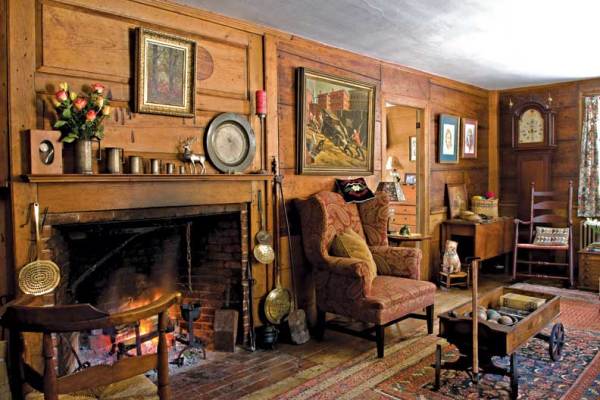
Early fireplaces were very wide and deep, which allowed for multiple pots to be cooking simultaneously, but also caused a lot of heat loss. (Photo: Edward Addeo)
The fireplace was a necessity in early America. As the hub of the house, a burning hearth provided heat, housed multiple fires for cooking and baking, and served as the nucleus of family gatherings. In the 1600s and early 1700s, the typical fireplace was a walk-in: a wide, deep, open recess, generally with only the briefest semblance of a mantel, or no mantel at all. The firebox was usually wider than it was tall, especially in the homes of Dutch settlers.
Fireplaces in English homes were smaller and more efficient. In New England and the Mid-Atlantic, colonial homes had central chimneys with multiple flues so that fires could be lit in two or more rooms on each floor. The central mass of stone or brick also tended to retain heat, keeping the house warmer overall. In the South, fireplaces were placed at the far ends of the house to reduce heat buildup, keeping the house cooler in summer.
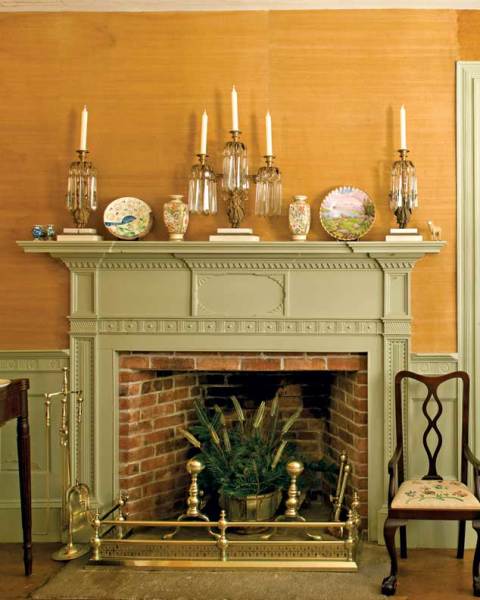
Federal fireplaces were known for beautiful and ornately carved mantels, like this one featuring pilasters, inset panels, and dentils. (Photo: Edward Addeo)
True mantels were rare before the 1800s. The very earliest American hearths were flush with the wall. In English colonial homes, fireplaces typically were surrounded by simple, floor-to-ceiling paneling, usually plain vertical or bead-edged planks. If the house was Dutch, the fireplace flue projected into the room, concealed by a massive hood. Decorative enhancements might include a few Delftware tiles, or in the case of the Dutch, a short decorative curtain that hung well above the fire pit.
By the second quarter of the 18th century, the fireplace had become the centerpiece of the main gathering room. Decorative paneling and other accents in the Georgian style were book-matched on either side of the opening, sometimes for the entire width of the wall.
While fireplaces large enough to stable a cow continued to be popular well into the early 19th century, around 1795 Sir Benjamin Thompson—aka Count Rumford—began fiddling with the design of the firebox. The result of his efforts is the basis for all open fireplaces today. Taller than it is wide and smaller and shallower than older styles, the Rumford fireplace has sharply angled covings on either side. The ingenious design throws more radiant heat into a room than its predecessors. Another key element is its narrow throat, which exhausts both smoke and air at an increased speed, acting as a check against backdrafts.
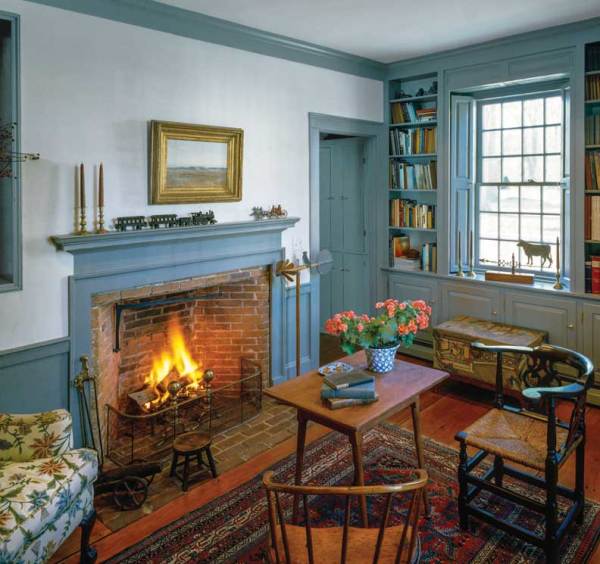
A Rumford fireplace’s revolutionary design—narrower and shallower, to help create a draft and reflect heat—became the standard for today. (Photo: Brian Vanden Brink)
Full-relief fireplaces with mantels and surrounds finally emerged after the Revolutionary War. With decorative elements like reeding, swags, and star and shell accents, Federal and Greek Revival mantels are among the most evocative signatures of their respective styles.
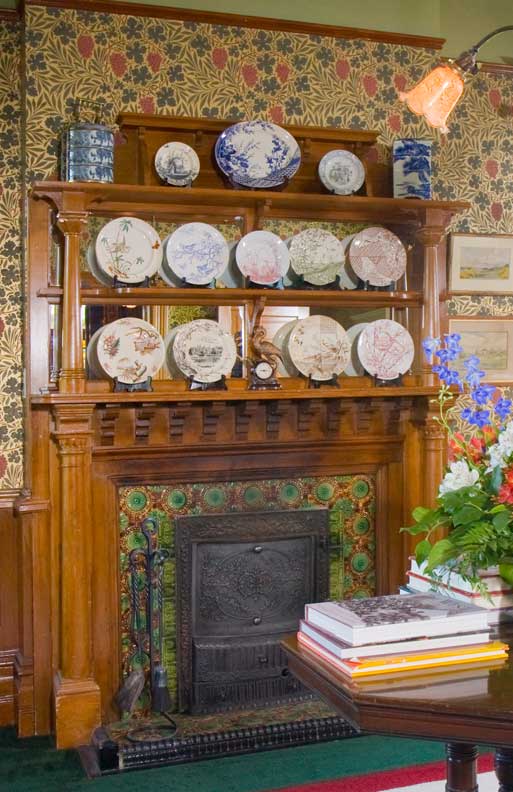
Victorian excess brought fireplaces with elaborate overmantels—this mirrored version displays dishes—and lovely tile work in a range of hues in the surround. (Photo: Heath Moffatt)
By the mid-1800s, as the country industrialized and became more urban, households were burning coal rather than wood. Grates were smaller and held lumps of coal in iron baskets. Surrounds got a makeover, too: The new style was cast iron in a horseshoe-arch shape, embellished by the many decorative flourishes of the Rococo Revival style, which were easily captured by the casting process.
As the Victorian age progressed, fireplaces became more ornate, with overmantels and columns. Options included complete cast-iron combination fireplaces (the first inserts!) and fireplaces with decorative tiles running along the legs of the surround. Later, surrounds were trimmed with glazed lozenge-shaped tile in a host of colors.
There would soon be a backlash, of course: In the early 20th century, fireplaces and mantels became much simpler, with those in Colonial Revival houses harking back to the motifs popularized in the late 1700s and early 1800s, sometimes liberally mixing and matching elements like 1750s Georgian moldings with 1840s Greek Revival fluting. Surrounds were simply finished with brick or stone.
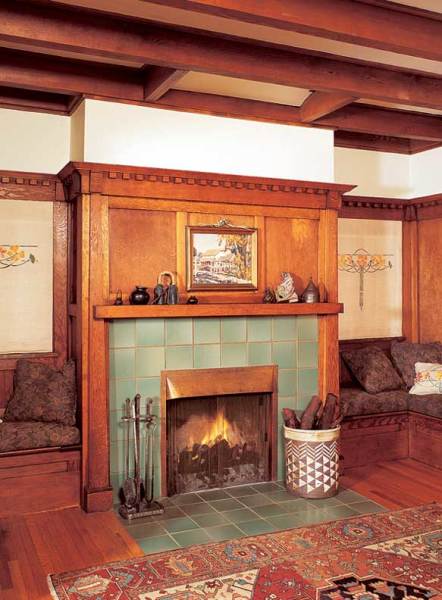
Bungalows and Arts & Crafts houses were known for their banquette-flanked hearths, often topped with copper hoods and faced with tile finished in earthy, mottled glazes. (Photo: Douglas Keister)
The back-to-nature movement spearheaded by Teddy Roosevelt and others had an effect, too: Many homes were treated to full-on fireplaces built of river rock or stone. This rustic style spilled over into the burgeoning Arts & Crafts movement, where materials from clinker brick to the more refined dressed stone and scenic art tile graced “modern” fireplaces.
Whether highly ornate or simple and rustic, a fireplace continues to be a source of warmth and comfort in the home—still one of the most desired elements in any period house today.







